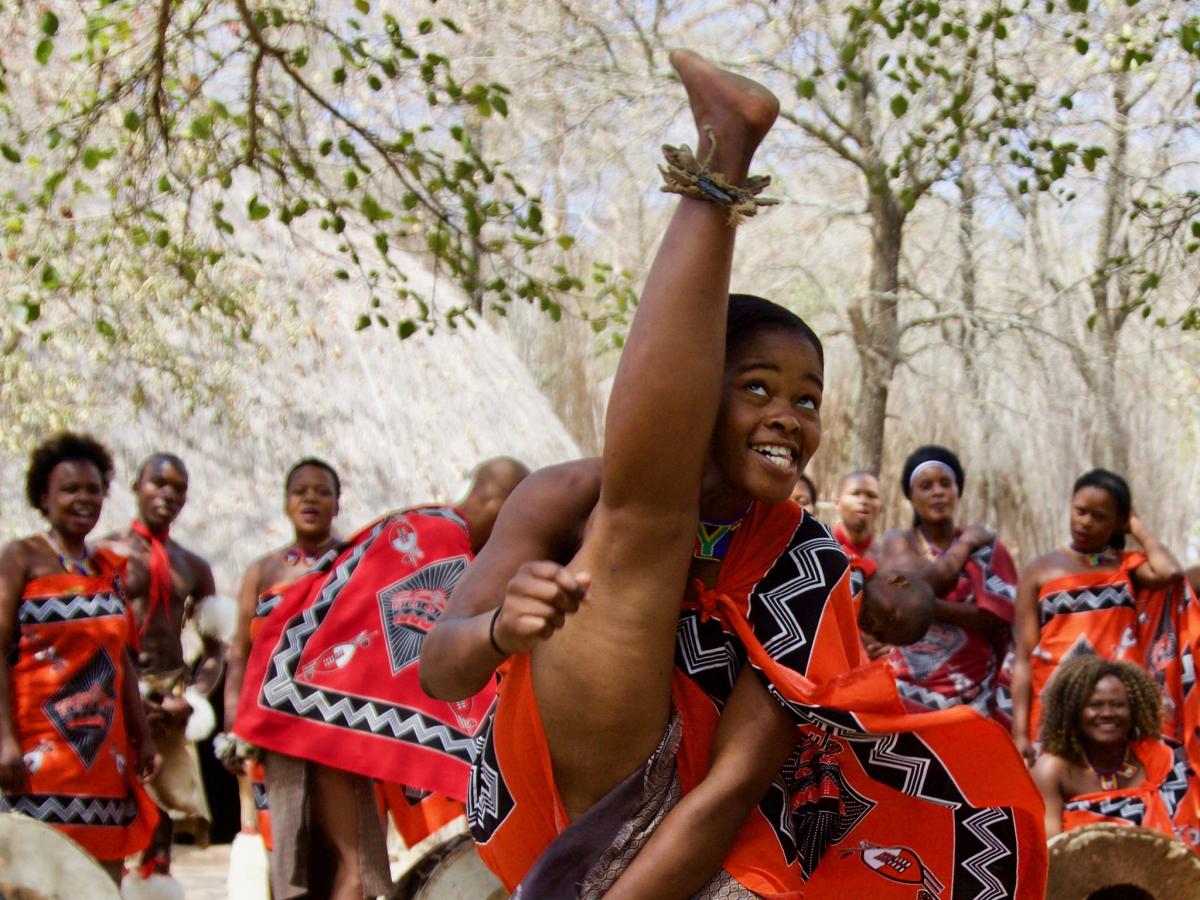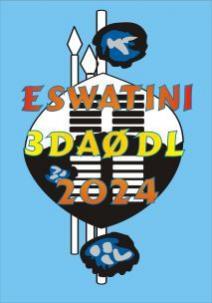3DA0DL Team will be active from Eswatini, 25 October - 9 November 2024.
Team - DK1BT, DL4WK, DL6SAK, DL7BO, DL7UFR.
Recent DX Spots 3DA0DL
3DA0DL Log search They will operate on HF Bands.
QSL via DL7UFR.
3DA0DL Eswatini News 28 October 2024
Last night we had a storm, rain and thunderstorms like we've never seen before. Our hostel parents were worried about our antennas. Both Spiderbeams defied the storm. Unfortunately, the storm was accompanied by a power cut that lasted several hours.
Kingdom of Eswatini: history, attractions and local customs
The Kingdom of Eswatini is an independent state located in the west of the African continent. The kingdom shares its eastern borders with Mozambique, while on all other sides it borders the Republic of South Africa. Until 2018, this tiny state was called the Kingdom of Swaziland, but the current monarch - Mswati III - decided to rename the country, solemnly announcing it at the celebration of the 50th anniversary of the declaration of independence of the state.
This distinctive country cannot be called a popular tourist destination, nevertheless the local flavour attracts those interested in authentic African culture. The Kingdom of Eswatini is one of the few functioning monarchies in the world where the monarch has real power, albeit partially limited by parliament. In addition, during the more than twenty-year reign of Mswati III, the country has developed a kind of cult of personality of the ruler, a phenomenon peculiar to such forms of government.
 Eswatini. Author - Jean Michel.
Eswatini. Author - Jean Michel.
Nature and climate of Eswatini
The relatively small area (only about 17,000 square kilometres) that the kingdom occupies features mountains alternating with savannahs and rainforests. Eswatini has several permanent rivers, the largest of which is the Lusutfu. However, the country has no access to the ocean.
The climate in Eswatini varies as the natural zones change, with a total of three in the country. The mountains have a temperate climate, followed by a subtropical climate and then a tropical climate. The highest rainfall in the mountains occurs during the summer season. The coldest month is July, when the average temperature is +12...+13 °C. The hottest month is February, with an average of +23 degrees Celsius.
The flora of Eswatini is characterised by great diversity. Scientists count about 2.5 thousand species of various plants on this territory. Here you can see 25 species of aloe, more than a dozen different orchids and the same number of lilies.
The fauna in Eswatini is as rich and diverse as the flora. Crocodiles, buffaloes, antelopes, hippos, zebras are just some of the wildlife found within the country.
History of the Kingdom of Eswatini
Most of the population of the modern kingdom is made up of the Swazi people, whose representatives migrated here from the central part of the continent in the Middle Ages. In the 19th century, the Swazi fought with the Zulu tribes who lived in neighbouring territories and regularly raided them. In 1836, the Swazis decisively repelled another Zulu raid and thus won a final victory over the would-be invaders. King Sobuza the First, who was in power at the time, united the disparate Swazi tribes and created a centralised state. Under the next king, Mswati the First, the state grew even further, with a territory twice the size of present-day Eswatini.
In the 1840s, the Swazi state was surrounded on all sides by European colonies, and the eyes of invaders were now on it. In 1894, the territory of the present kingdom was completely conquered by the Boers (descendants of European colonisers) and incorporated into the Transvaal (today's South Africa).
In 1899-1902 there was an Anglo-Boer war, as a result of which the British secured Swaziland. In doing so, the occupiers allowed the Swazi to appoint their own chiefs.
In 1964, Swaziland held its first official elections, which resulted in the formation of a local parliament. The king at the time was Sobuza II, whose party eventually won a majority in parliament.
On 6 September 1968, Swaziland gained full independence from Britain. In the next parliamentary elections, 20% of the MPs who were in opposition to the incumbent monarchical government were elected. However, the king was not going to have even such a minimal threat to the existing system and a year after the elections he dissolved the parliament and cancelled the current constitution. From that moment the power in Swaziland was completely usurped, and parties and trade unions became illegal.
After the death of Sobuza the Second in 1982, his place was taken by Mswati III, who still rules today. The odious ruler is famous for his polygamy and his love of traditional swazi outfits, in which he appears even at official meetings.
By the way, the decision to rename Swaziland to Eswatini was taken by the king for the most unexpected reasons. According to him, abroad Swaziland was constantly confused with Switzerland. To avoid confusion and misunderstanding, the king first officially used the new name during a speech at the UN, and later enshrined the change in a decree.

3DA0DL. Eswatini DX Pedition Logo.
Umshlanga, or ‘Reed Dance’
Almost the most important event in the Kingdom of Eswatini is the festival of the ‘Reed Dance’. Every year tens of thousands of girls from all over the country come to the festival, wishing to take part in the grandiose viewing, where the king chooses his next wife among half-naked applicants. By the way, today Mswati the Third has already more than 12 wives, and he is not going to stop there, especially since his father had about a hundred wives.
However, in Eswatini not all residents are not all excited about this holiday. So, in 2018, the king never chose a new wife because of the protests organised by students of the capital's university. The participants of the strike were interested in why there are funds in the treasury for such holidays, while there is never any money for education. The students were arrested and punished, but the celebration was still disrupted.
 Eswatini. Author - Michael Fowler.
Eswatini. Author - Michael Fowler.
Eswatini Attractions
Hlane National Park
The largest reserve in the Kingdom of Eswatini, Hlane Park has a developed, by local standards, infrastructure. Here you can see large representatives of fauna - elephants, white rhinos, lions, leopards, antelopes and other animals. All dangerous predators live in a separate fenced territory, and you can get there only if you are accompanied by a guide in a special closed transport. The rest of the safe territory of the park can be freely travelled on one of the numerous hiking trails. Anyone can rent a bicycle, or take a scenic walk on their own.
Mlavula Nature Reserve
The second largest nature reserve is located at the foot of the mountain system and covers an area of 18,000 hectares. The wildlife here is not as diverse as in Hlana, but the natural landscape is breathtaking in its pristine beauty. Within the park you can admire dry savannahs, spacious green valleys and dense tropical forests. The diversity of the park's plant life is impressive. The park is also home to more than 350 species of birds.
Lobamba is the residence of the Queen Mother
Lobamba, the historical capital of the kingdom, is home to the country's parliament, whose work is mostly nominal.
Among the local attractions, in addition to the parliament building and the royal residence, it is important to mention the National Museum with a working exposition telling about the history and customs of the former Swaziland. There is a memorial to Sobuza II, the father of the current king. Ethnography lovers will be interested in Mantenga Village - an open-air museum in the form of a traditional Swazi settlement, where local life is shown. Lobamba is also home to the country's most popular festival, Umhlanga.
Manzini City
Located in the heart of the country, Manzini is among the largest population centres in the Kingdom of Eswatini. The city has a population of almost 80,000 people. In the late 19th century, Manzini served as the administrative centre of the country, but was later destroyed during the Anglo-Boer War and the capital was moved to Mbabane (the modern capital of Eswatini).
Among tourists, Manzini has gained fame as the largest market in the country. In addition to fresh fruit and vegetables, you can buy unique household items made by local craftsmen. Pottery, hand-carved wooden items, traditional Swazi clothing and jewellery, wicker baskets and much more are in particular demand.
Modern shopping enthusiasts can diversify their leisure time with a trip to the local shopping centre next to the market. You can also visit the most colourful local landmark, an old stone building that belonged to the Catholic mission.

